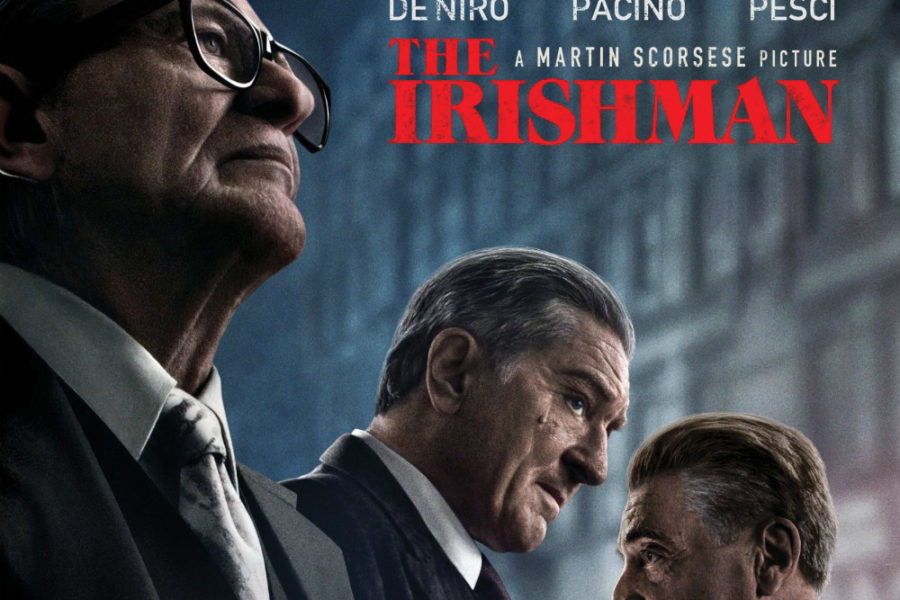
He was a thug.
And a drunk.
He liked to hang around wiseguys.
He may have “done some work,” although the consensus is that he paid someone else to pull the trigger.
What he didn’t do, according to most reliable sources, is put two bullets in the back of Jimmy Hoffa’s head.
The Irishman, Martin Scorsese’s latest Mafia epic, may alter the public perception but not the reality of who Frank Sheeran was and the role he played in the underworld.
“He was a tough guy and a big drinker,” said former Philadelphia mobster Nicholas “Nicky Crow” Caramandi. “He used to come down to this restaurant on Front Street every Monday night. We’d eat spaghetti and clams.”
Caramandi, one of the first Philadelphia mobsters to turn government witness back in the 1980s, said he has no first-hand knowledge of the Hoffa hit, but said everyone in the underworld knew “it came from those guys in North Jersey…Provenzano and his people.” He doubts very much that Sheeran was the shooter.
A North Jersey mob figure says using Sheeran to lure Hoffa into the car that day back in 1975 would make sense. Sheeran was Hoffa’s friend. They had a long relationship built around trust. You always want your victim to feel comfortable. But the mob wouldn’t have gone to “an outsider” to carry out the murder, he said. And when it came to a hit of the magnitude of the Jimmy Hoffa murder Sheeran was still, in mob parlance, an outsider.
“Look, it was done in Detroit,” he said. “Those guys were tough. They would take care of their own problem.”
And no way was the body driven back to New Jersey and buried in a landfill, as some have speculated.
“You kill somebody, you want to get as far away from the body as quickly as you can,” he said. “Nobody’s driving a body six-hundred miles to bury it.”
The Irishman is based on the book “I Heard You Paint Houses” written by Sheeran’s lawyer Charles Brandt. Both the movie and the book have raised eyebrows in law enforcement and underworld circles. In addition to claiming he was the man who shot Hoffa, Sheeran, who died in 2003, told Brandt that he provided the rifles used in the assassination of John F. Kennedy and that he was the hitman who gunned down mobster Joey Gallo at Umberto’s Clam House back in 1972.
Like the Kennedy assassination, the Hoffa murder remains one of the great American mysteries. That the mob is suspected of playing a role in each only adds to the drama.
As to Joey Gallo?
Forgetaboutit.
“Everybody on Mulberry Street knew who shot Gallo,” said the North Jersey mobster. “And it wasn’t Frank Sheeran.”
Scorsese’s movie touches on those issues but focuses primarily on the Hoffa hit. As a result, it has added to the legend surrounding the disappearance and murder of the infamous Teamster boss who showed up for a meeting at a restaurant outside Detroit and was never seen again.
While adopting Sheeran’s questionable account, The Irishman also offers some snapshots of the Philadelphia underworld in the 1970s. Angelo Bruno, portrayed by Harvey Keitel, has a few brief scenes. Skinny Razor DiTullio’s Friendly Lounge at Eighth and Washington and the still very popular Villa di Roma restaurant on Ninth Street also figure in the story.
This was the world in which Sheeran operated. It was where he got his start. There is no doubt he was a player. But the movie only scratches the surface when it comes to Philadelphia, the mob and the Teamsters.
The late, great Pennsylvania Crime Commission provided much more in its massive and highly readable 1980 annual report titled, A Decade of Organized Crime. The 279-page book was considered “the bible” for reporters tracking the mob back in those days. My worn copy is tattered and ripped with many pages taped together, but it is still one of my go-to sources.
So here is Sheeran, head of Teamsters Local 326 in Wilmington, ordering Charlie Allen, a mob enforcer, to deliver a message to the president of a company who was giving Sheeran a hard time.
“How bad do you want him hurt?” Allen asks.
“Break both his legs, I want him laid up,” Sheeran replies “I want him to go to the hospital.”
Allen, a degenerate drug dealer as well as mob associate, was cooperating with the FBI at the time and was wearing a body wire.
“I’ll hit him with a baseball bat,” Allen replies. “I got one of them steel baseball bats. I’ll fill it with sand…that’ll really do it.”
Allen later testified about a series of murders, attempted murders, arsons and bombings he said he carried out for Sheeran, including the murder of Teamsters Local 500 leader Francis “Big Bobby” Marino who was gunned down in his union office.
“I shot him with a .22 …but that didn’t seem to have any effect because he was a big man,” Allen later testified. “So I started using a .38. He was running for a baseball bat…He tried to jump over the desk and I shot him. Then he fell halfway under the desk. He got halfway up, and then he fell again. I went behind the desk and put the.38 to his back and shot him. Then I went out the door and went home.”
Sheeran and another union leader, Louis “Louie Buttons” Bottone, were charged with murder and racketeering for that hit and several other Teamster-related acts of violence. But both beat their cases.
Allen was not the greatest witness. His credibility was suspect, as was his character. (This would be reinforced later when, living with a new identity after being relocated by federal authorities, he was charged with sexually abusing a step-daughter.)
During those days it was often difficult to separate the mobsters from the Teamster bosses. Philadelphia Teamsters Local 107 was considered one of the most corrupt and violent locals in the country.
One Local 107 official and his secretary/girlfriend were shot to death in the union’s offices on Spring Garden Street. In another incident, Robert DeGeorge, a union reformer, was gunned down outside the office. Sheeran was charged in the DeGeorge hit but beat that rap on a technicality.
The point is, he was involved with the mob in a significant way. He was tapped to head Local 326 in Wilmington as part of an internal Teamsters International “reform” effort that split Local 107 into several locals.
The fact that a guy like Sheeran was chosen to head one of the new locals put the lie to the “reform” effort.
Sheeran’s involvement with mob boss Russell Bufalino, a key issue in the movie, is also well documented in the Crime Commission report. Joe Pesci played Bufalino in The Irishman and may have given the best performance of any of the actors in the star-studded cast., capturing the quiet power and confidence of the Scranton-Wilkes Barre mob leader.
The Commission report points to meetings at Vesuvio’s Restaurant in New York where Bufalino, accompanied by Sheeran, met to discuss mob business. The report also cites Bufalino’s role in the formation of the Pittston chapter (Chapter 34) of the Italian American Civil Rights League (IACRL) in 1971.
The organization was found by New York mob boss Joe Colombo
“Sheeran… has attended several of the…Chapter 34 annual dinners at which Bufalino has been honored,” the report noted.
“An ad appeared in the 1978 IACRL Booklet which read ‘Your Irish Friend…Frank Sheeran.’ There was also a full-page ad for Local 326. Two ads were dedicated to Bufalino and Sheeran together.”
A civil rights league organized by mobsters to defend the rights of Italian-Americans victimized by stereotyping is, in itself, a stereotype. More to the point, it is an example of how the mob usurps the power and prestige of legitimate organizations to advance its own agenda. Taking over labor unions is another, more egregious and, some might argue, ongoing example.
Sheeran was a labor racketeer.
So was Jimmy Hoffa.
Both made deals with the mob to line their own pockets.
In The Irishman, Scorsese uses the betrayal and murder of Hoffa as the basis for a story about aging gangsters looking back on their lives. Is there regret and remorse? That’s the ultimate question in a movie that marks the culmination of Scorsese’s lengthy and celebrated cinematic portrayal of organized crime.
And it’s one worth asking.
Even if Frank Sheeran didn’t pump those two bullets into the back of Jimmy Hoffa’s head.

